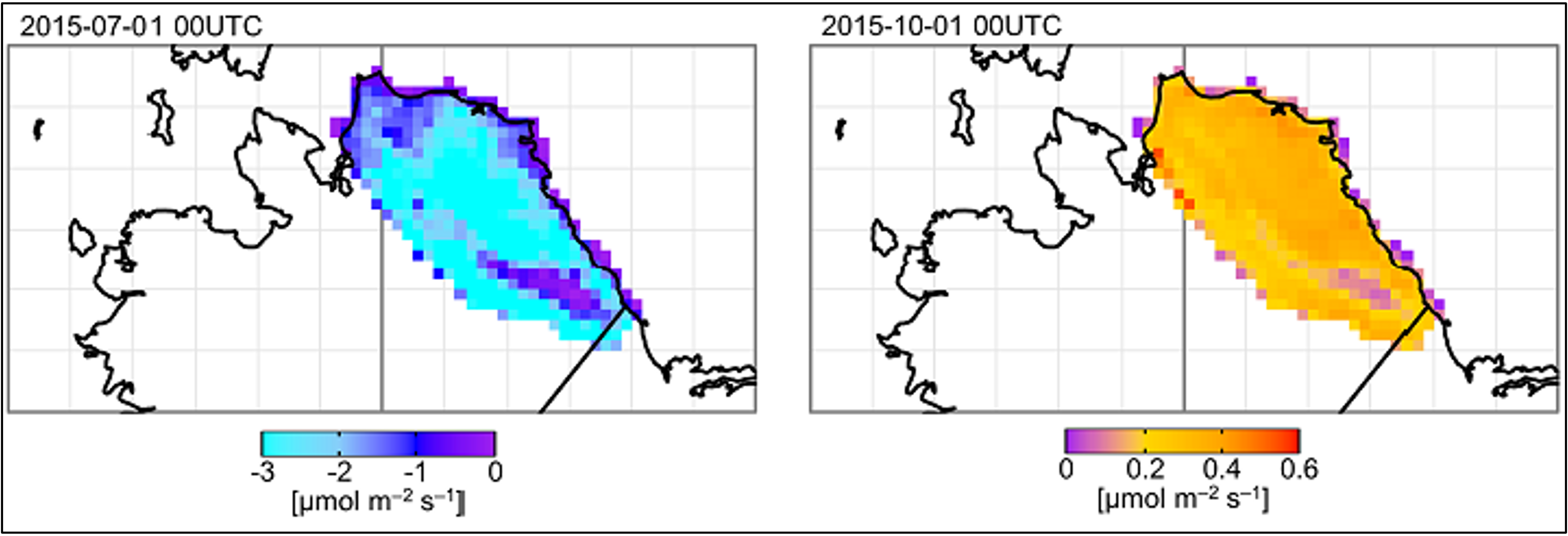The ORNL DAAC recently released a new Arctic-Boreal Vulnerability Experiment (ABoVE) dataset by Schiferl, L., et al. (2022):
ABoVE: TVPRM Simulated Net Ecosystem Exchange, Alaskan North Slope, 2008-2017
This dataset includes hourly net ecosystem exchange (NEE) simulated by the Tundra Vegetation Photosynthesis and Respiration Model (TVPRM) at 30 km horizontal resolution for the Alaskan North Slope for 2008-2017. TVPRM calculates tundra NEE from air temperature, soil temperature, photosynthetically active radiation (PAR), and solar-induced chlorophyll fluorescence (SIF) using functional relationships derived from eddy covariance tower measurements. These relationships were then scaled over the region using gridded meteorology and a vegetation map. The site-level CO2 fluxes fell into two distinct ecosystem groups: inland tundra (ICS, ICT, ICH, IVO) and coastal tundra (ATQ, BES, BEO, CMDL). The expanded modeling framework allowed for the easy substitution of ecological behaviors and environmental drivers, including the choice of representative inland tundra site, coastal tundra site, vegetation map (CAVM, RasterCAVM, or ABoVE-LC), meteorological reanalysis product (NARR or ERA5), and SIF product (GOME2, GOSIF, or CSIF). Using all of these variations generated an ensemble of 288 different TVPRM simulations of regional CO2 flux and one additional simulation option with added aquatic and zero curtain fluxes (AqZC).
The ABoVE is a NASA Terrestrial Ecology Program field campaign being conducted in Alaska and western Canada, for 8 to 10 years, starting in 2015. Research for ABoVE links field-based, process-level studies with geospatial data products derived from airborne and satellite sensors, providing a foundation for improving the analysis, and modeling capabilities needed to understand and predict ecosystem responses to, and societal implications of, climate change in the Arctic and Boreal regions.
Additional data from ABoVE and other relevant links can be found on the ORNL DAAC's ABoVE Project Page.
Citation: Schiferl, L., and R. Commane. 2022. ABoVE: TVPRM Simulated Net Ecosystem Exchange, Alaskan North Slope, 2008-2017. ORNL DAAC, Oak Ridge, Tennessee, USA. https://doi.org/10.3334/ORNLDAAC/1920

